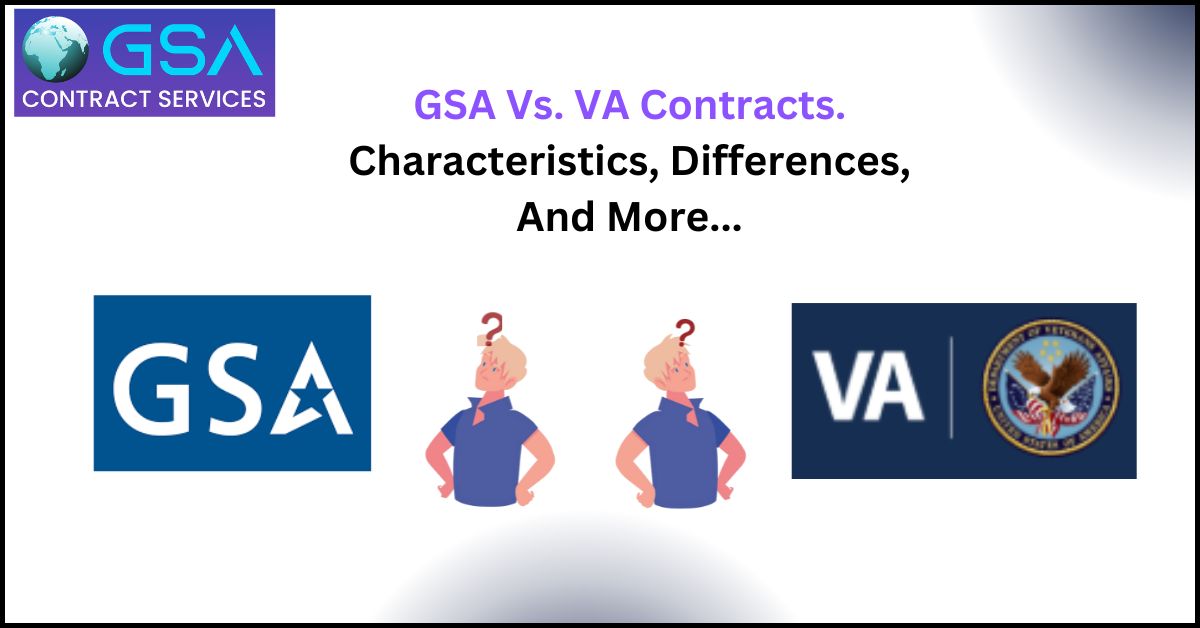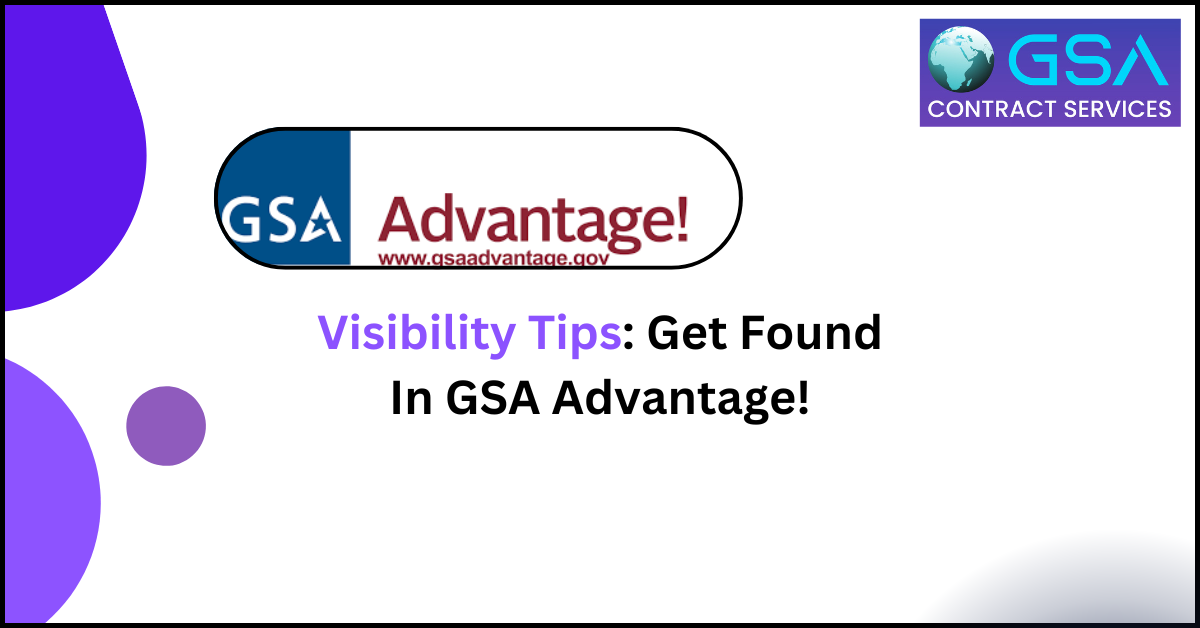In the complex ecosystem of federal government contracting, two of the most powerful and frequently utilized procurement vehicles are the GSA Multiple Award Schedule (MAS) and the VA Federal Supply Schedule (FSS).
For businesses seeking to sell their products and services to the world’s largest purchaser, understanding the distinction between these two is not merely academic; it’s fundamental to strategic planning, resource allocation, and ultimately, commercial success.
While often mentioned in the same breath and sharing a common ancestry, the GSA and VA Schedules are distinct pathways with unique rules, customer bases, and advantages. Choosing the right one, or leveraging both, can be the difference between a stagnant contract and a thriving federal revenue stream.
This article will serve as a definitive guide, dissecting the history, purpose, structure, and key differences between these two monumental contracting vehicles, providing you with the knowledge to make an informed decision for your business.
Executive Summary: The Core Difference
At its simplest, the core difference lies in their primary customer base and overarching purpose:
GSA Schedule: Managed by the General Services Administration (GSA), its primary purpose is to serve the broad federal civilian agency market (e.g., Department of Homeland Security, Department of Agriculture, NASA, EPA) as well as state, local, and tribal governments. It is a government-wide acquisition vehicle.
VA Schedule: Managed by the Department of Veterans Affairs (VA), its primary, legally mandated purpose is to support the healthcare and benefits missions of the Veterans Health Administration (VHA) and the entire VA. Its use has been extended to other federal agencies, but its heart and soul are veterans’ healthcare.
Think of it this way: The GSA Schedule is a “department store” for the entire federal government, selling everything from office furniture and IT solutions to professional services. The VA Schedule is a “specialty medical supply store” that, while open to other shoppers, exists first and foremost to stock the shelves of VA hospitals and clinics.
Part 1: Understanding the GSA Multiple Award Schedule (MAS)
History and Mandate
The GSA Schedule program, often just called “The GSA Schedule” or “GSA Advantage,” has its roots in the post-World War II era. The General Services Administration was established in 1949 to streamline government administration and eliminate redundancy.
The Schedules program evolved as a way to establish long-term, government-wide contracts with commercial firms, providing federal agencies with a simplified and efficient process to purchase commercial products and services at volume-discounted pricing.
The program is governed by the Federal Acquisition Regulation (FAR) Subpart 8.4 and is a key component of the Federal Strategic Sourcing Initiative (FSSI).
Key Characteristics
Scope: Immensely broad. The GSA MAS is organized into 12 Large Categories, which are further broken down into Subcategories and Special Item Numbers (SINs). These categories include:
- Office Management
- Furniture
- Facilities & Construction
- Industrial Products & Services
- Information Technology (IT)
- Professional Services
- Security & Protection
- Transportation & Logistics Services
- Travel & Lodging
- Human Capital
- Audio/Visual & Video Teleconferencing
- Miscellaneous (a true catch-all)
Customer Base: All federal civilian and defense agencies. Furthermore, through programs like the Cooperative Purchasing Program and the Disaster Recovery Purchasing Program, state, local, territorial, and tribal governments can purchase specific IT, security, and law enforcement products and services from the GSA Schedule, vastly expanding the potential market.
The Process: Obtaining a GSA Schedule contract is a rigorous, often lengthy process known as “getting on Schedule.” It involves:
Preparation: Ensuring your company is compliant (e.g., SAM.gov registration, past performance, financial stability).
Offer Submission: Responding to the massive GSA MAS Solicitation, which requires proposing commercial pricing, disclosing commercial sales practices, and crafting a technical proposal.
Negotiation: Engaging in often protracted negotiations with a GSA Contracting Officer to establish your “Most Favored Customer” pricing and finalize terms.
Award: Receiving a unique GSA Contract number, after which your products/services are uploaded to the GSA Advantage!® online shopping portal.
Pricing: The cornerstone of the GSA Schedule is the concept of “Basis of Award.” Contractors must track sales to a predefined “Basis of Award” customer (or group of customers) and ensure that government prices are equal to or better than the prices offered to that commercial customer. This is managed through the Price Reduction Clause (PRC).
Part 2: Understanding the VA Federal Supply Schedule (FSS)
History and Mandate
The VA FSS program is older and was born from a very specific, critical need. Its statutory authority stems from the Veterans Healthcare Act of 1992 (Public Law 102-585), which granted the VA its own independent acquisition authority. This was done to ensure that the VA could reliably and rapidly acquire the medical supplies, pharmaceuticals, and services needed to provide healthcare to the nation’s veterans without being subject to the procurement delays of other agencies.
The VA FSS is often referred to as the “VA Schedule” or by its contract number prefix, “V797.” Its legal foundation is in Title 38 of the U.S. Code, which gives the VA unique flexibility in its medical acquisitions, separate from the FAR.
Key Characteristics
Scope: Highly specialized and focused. The VA Schedule is almost exclusively dedicated to products and services related to healthcare and maintenance of VA facilities. Its main categories include:
- Medical Equipment and Supplies
- Pharmaceutical Drugs (a massive component)
- Surgical and Exam Equipment
- Laboratory Equipment and Supplies
- Dental Equipment and Supplies
- Optical and Ophthalmic Equipment
- Medical Services (e.g., staffing, medical support)
- Information Technology relevant to healthcare (often through the separate T4NG2 CIO-SP3 vehicle)
Customer Base: While its primary and mandatory user is the Department of Veterans Affairs, the VA FSS is also available for use by other federal agencies. This means the Army, Navy, Air Force, Indian Health Service (IHS), and even the Bureau of Prisons can—and do—purchase from the VA Schedule. However, the VA remains the dominant customer.
The Process: The process of obtaining a VA Schedule contract is similarly rigorous but distinct:
Preparation: Similar requirements for SAM.gov and financial stability.
Offer Submission: Responding to a VA-specific solicitation for the desired category. The requirements are heavily tailored to the healthcare industry, often demanding strict FDA approvals, ISO certifications, and other medical-specific compliances.
Negotiation: Negotiations are conducted with a VA Contracting Officer. A critical difference is the lack of a Price Reduction Clause (PRC). Instead, the VA uses a Tracking Customer Clause.
Award: Receiving a VA Contract number, with products listed on the VA’s online portal.
Pricing (The Critical Difference): The VA Schedule operates under a different pricing mechanism. Instead of the PRC, it uses the Industrial Funding Fee (IFF) and the ****Tracking Customer Clause.** The IFF is a percentage fee (currently 0.75%) applied to all sales, which funds the entire VA FSS program operations.
The “Tracking Customer” is a commercial customer chosen by the contractor at the time of offer. The contractor must track prices to this customer and report to the VA if their government price becomes higher than the price for the tracking customer. This system is often considered more straightforward and less administratively burdensome than the GSA’s PRC.
Part 3: Side-by-Side Comparison: GSA Schedule vs. VA Schedule
| Feature | GSA Multiple Award Schedule (MAS) | VA Federal Supply Schedule (FSS) |
| Administering Agency | General Services Administration (GSA) | Department of Veterans Affairs (VA) |
| Primary Legal Authority | Federal Acquisition Regulation (FAR) | Title 38, U.S. Code & VA Acquisition Regulation (VAAR) |
| Primary Customer Base | All Federal Civilian and Defense Agencies | Department of Veterans Affairs (VA) |
| Secondary Customer Base | State, Local, Tribal Governments (for certain SINs) | Other Federal Agencies (DoD, IHS, etc.) |
| Scope of Product or Service | Extremely Broad: IT, Office, Professional Services, Furniture, etc. | Highly Specialized: Medical, Pharmaceutical, Dental, Lab |
| Core Purpose | Government-wide supply of commercial products & services | Support the healthcare mission of the Veterans Health Administration |
| Pricing Mechanism | Price Reduction Clause (PRC) | Tracking Customer Clause |
| Administrative Fee | Industrial Funding Fee (IFF) of 0.75% | Industrial Funding Fee (IFF) of 0.75% |
| Online Marketplace | GSA Advantage!® | VA Online Catalog |
| Contract Number Prefix | GS-07F-XXXXX (example) | V797P-XXXXX (example) |
| Key Regulatory Clause | Price Reduction Clause (FAR 52.215-18 | Tracking Customer Clause (VAAR 852.215-70) |
Part 4: Strategic Considerations: Which One is Right for Your Business?
The choice isn’t always mutually exclusive. Many companies, especially those in healthcare IT or selling medical equipment, successfully hold both contracts. Your decision should be based on your target market and product/service type.
When to Pursue a GSA Schedule:
- Your target customers are diverse federal agencies like DHS, USDA, EPA, or SSA.
- You sell non-medical products like office supplies, furniture, or hardware.
- You offer professional services like management consulting, engineering, logistics, or marketing.
- You want access to the state and local government market through Cooperative Purchasing.
- Your offerings are broad commercial solutions applicable to any office or operational environment.
When to Pursue a VA Schedule:
- Your primary target is the Veterans Health Administration (hospitals, clinics, medical centers).
- You sell medical devices, pharmaceuticals, laboratory equipment, or dental supplies.
- You provide healthcare-related services like medical staffing, dialysis services, or equipment maintenance.
- Your products require strict medical industry certifications (FDA, ISO 13485, etc.).
- You prefer the pricing simplicity of the Tracking Customer model over the GSA’s PRC.
The Case for Holding Both Contracts
A company manufacturing a specialized medical-grade computer monitor might pursue:
A VA Schedule contract under the medical equipment category to sell directly to VA hospitals.
A GSA Schedule contract under the IT category to sell to the Department of Defense for use in military clinics, to NASA for its medical facilities, and to any other federal agency needing high-resolution displays.
This dual-contract strategy maximizes market reach but doubles the administrative burden of compliance, reporting, and contract maintenance.
Part 5: Beyond the Award: Compliance and Maintenance
Winning the contract is only the beginning. Both vehicles require diligent ongoing management.
GSA Schedule Compliance: Requires strict adherence to the Price Reduction Clause. Contractors must monitor their commercial sales to their Basis of Award customer and instantly apply any price reductions to the government.
They must also submit quarterly IFF reports and payments, and file a Modification to add new products/prices. The annual Transactional Data Reporting (TDR) requirement for some contracts adds another layer of data submission.
VA Schedule Compliance: While free from the PRC, contractors must still monitor prices against their Tracking Customer. The quarterly IFF reporting and payment are still required. Adding new products requires a formal modification request to the VA.
Failure to comply with the terms of either contract can result in significant penalties, contract termination, and even suspension from federal contracting.
Conclusion: Two Powerful Pathways to Federal Sales
The GSA and VA Schedule contracts are not rivals but complementary tools in the federal procurement toolkit. The “difference” is defined by mission and market.
The GSA Schedule is the undisputed king of breadth, offering a one-stop shop for the vast and varied needs of the entire federal government. It is the go-to for any commercial item or service with a general application.
The VA Schedule is the undisputed king of depth, offering a specialized, mission-focused procurement channel dedicated to sustaining one of the largest integrated healthcare systems in the world.
For vendors, the path forward is clear: conduct a clear-eyed assessment of what you sell and who you want to sell it to. If your product saves a life, the VA Schedule is your runway. If it improves an office, secures a border, or analyzes data, the GSA Schedule is your highway. And if it does both, be prepared to navigate both of these powerful landscapes to achieve maximum federal sales success. Understanding their differences is the first critical step on that journey.



